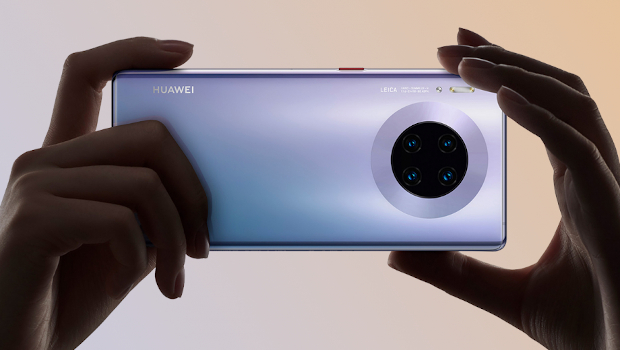
Huawei’s Mate 30 Pro braces itself for life without Google
Huawei’s first flagship since the company was kicked out of the Google ecosystem has finally been revealed.
Announced on-stage at a press conference in Munich, the new Mate 30 Pro is set to launch on an open-source version of Android that is enhanced by Huawei’s EMUI 10 skin.
Following the cadence of last year’s Mate 20 Pro, Huawei’s latest flagship takes the photography chops of the P30 Pro and combines it with premium specs and cutting-edge design. The device is powered by Huawei’s new Kirin 990 processor, 8Gb of RAM, 256Gb of storage and a 4500mAh battery.
Aside from the battery size, those numbers are not quite the highest in a 2019 flagship. For example, Samsung’s Galaxy Note 10+ 5G has 12Gb of RAM and 512Gb of storage. Still, that is respectable for a phone like this one.
Overseas, it looks like there will be two variants of the device. At this stage, it is not yet clear who will get the 4G or 5G-capable version of the Mate 30 Pro.
The front of the Mate 30 Pro is built around a 6.53″ curved OLED display that wraps around the edges of the device in the same style as something like Samsung’s Galaxy S10. One of the more interesting wrinkles here is the absence of a physical set of volume buttons.
Rather than try and work around the reality that you are probably going to accidentally touch the sides of the device, Huawei are leaning into it. Double tapping on the edge where you would expect a volume button to be will trigger a pop-up volume slider on the main part of the screen.
This is not the first time that a flagship has tried to move beyond physical buttons but it is certainly something that sets the Mate 30 Pro apart from the other flagships out there. Whether it works is another question entirely.
In a contrast to the P30 Pro, the Mate 30 Pro features a larger wedge notch. However, what you lose in screen estate, you are going to gain in security. Like the Mate 20 Pro, the Mate 30 Pro features iPhone-style 3D Face Unlock. There is also a 32MP selfie camera.
Then, on the other side of the Mate 30 Pro, you have got a quad lens camera. This array features two 40MP lenses (wide-angle + ultra-wide) and one 8MP telephoto lens, plus a 3D ToF camera used to enhance portrait shots.
The first big advancement here is the addition of a second 40MP ultra-wide lens, which features the SuperSpectrum sensor tech found in the P30 Pro.
The other key improvement here is the addition of a new noise-reduction technology that promises noise-reduction of about 30% – though Huawei could not give details on what the story behind that number looks like.
All told, the Mate 30 Pro can offer 3x optical zoom, 5x hybrid zoom and 30x digital zoom. This is a slight step down from the P30 Pro. However, to make to up the difference, Huawei are adding a set of new videography features such as 7680FPS slow-motion.
In terms of charging tech, the Mate 30 Pro supports 40W fast-charging via USB Type-C (with a 40W charger included in the box) and 27W wireless charging. The reverse wireless charging introduced with the Mate 20 Pro also returns. Huawei say this implementation of feature will now charge faster relative to previous iterations but could not give a specific measurement of by how much.
As you might expect, the biggest talking point here is the omission of the Google Play Store. Now, Huawei have an enormous customer base in regions like China where the Google Play Store is not available anyway. However, for western consumers, it is a big deal.
Despite this drawback and as we have said before, the Mate 30 Pro has the potential to be one of the year’s most interesting and exciting flagship smartphones. You will still be able to get your hands dirty and sideload apps if you want and Huawei’s own app store is looking to make up some of the difference but whether or not consumers are ready and willing to work around these limitations is anyone’s guess.
Hell, maybe the idea of a phone that does not have Facebook or Snapchat is a draw for some consumers. Anything is possible. It is all uncharted territory and, pending a last-minute back-down by the US Commerce Department, it is the kind of thing we will not really know for sure until the Mate 30 Pro lands in the market and in the hands of consumers.
Local pricing and availability for the Huawei Mate 30 Pro is still to be determined.
IDG News Service








Subscribers 0
Fans 0
Followers 0
Followers